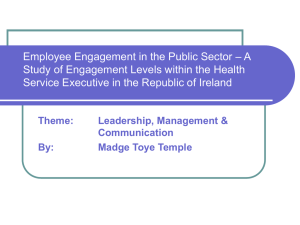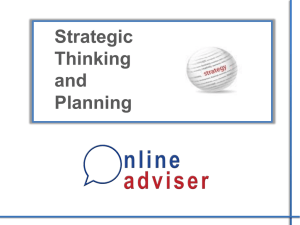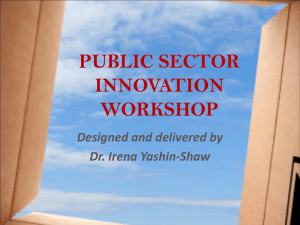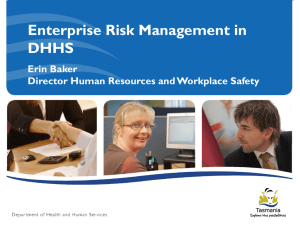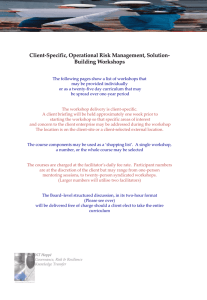Erasmus +
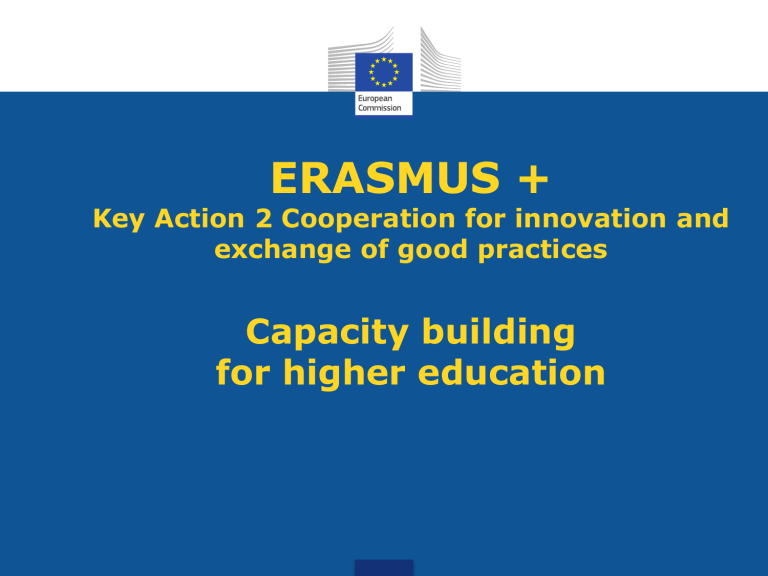
ERASMUS +
Key Action 2 Cooperation for innovation and exchange of good practices
Capacity building for higher education
Objectives
• Improve:
• quality and relevance of higher education in partner countries
• Enhance:
•
•
• competences, skills and relevance of HE for the labour market and society management, governance and innovation capacities, as well as the internationalisation of HEIs capacities of national authorities to modernise their higher education systems
• Foster:
• regional integration and cooperation across different regions of the world through joint initiatives, sharing of good practices and cooperation
• Promote:
• voluntary convergence with EU developments in higher education
• people-to-people contacts
• Support:
• The objectives of the Communications EU Higher Education in the World and the Agenda for Change
2
Some Background for South Africa
13 million Euro available for 2014-2017
1st Call in October 2014
National priorities will a pply:
Subject areas
Quality of education and teaching
Management and operation of HEI
HE sector in society
3
How does it work
Short and mid-term projects (2 or 3 years)
Put forward by consortia of institutions from EU and Partner countries
Selected on the basis of open and highly competitive calls for proposal
(approx, 15% succes rate)
Each project is coordinated/represented by a coordinating HEI from the EU or the Partner countries
5 main principles:
-
-
-
-
-
Targets: institutions and systems rather than individuals
Relevance to needs of countries and institutions
International cooperation as a means
Bottom-up approach
Emphasis put on institutional cooperation (commitment and impact)
4
• Centrally managed by
Maximum grant: Alignement: 1 million € max (with possibility of less for small envelopes)
Unit costs and lump sums wherever possible
Will cover programme and partner country staff costs (up to 40% max.), equipment for partner countries (up to 30% max), mobility related to the activities required to reach objectives, other costs (translation, printing etc) and overheads (up to 2,5%). Minimum 10% co-financing
5
Activities for higher education
Joint Projects:
Focus on curriculum development, modernisation of teaching approaches, of governance and functioning of HEIs, strengthening relations between
HEIs and the wider economic and social environment
Impact at institutional level
Structural Projects:
Focus on modernisation of policies, governance and management of higher education systems, strengthening of relations between higher education systems and the wider societal and economic environment.
Impact on higher education systems and reforms at national and/or regional level
6
Examples of activities
Joint Projects:
development, testing and adaptation of:
•
•
•
•
•
• curricula, courses, learning materials and tools, learning and teaching methodologies and pedagogical approaches, especially those delivering key competences and basic skills, language skills, entrepreneurship education, and focusing on the use of ICT new forms of practical training schemes and study of real life cases in business and industry, university-enterprise cooperation, including the creation of business start-ups new forms of learning and providing education and training, notably strategic use of open and flexible learning, virtual mobility, open educational resources and better exploitation of the ICT potential guidance, counselling and coaching methods and tools tools and methods for professionalization and professional development of academic and administrative staff quality assurance at programme and institution level
7
Examples of activities
Joint Projects:
new governance and management systems and structures, modern university services e.g. for financial management, international relations, student counselling and guidance, academic affairs and research
strengthening of the internationalisation of HEI and the capacity to network effectively in research, scientific and technological innovation
(international openness of curricula, student services, inter-institutional mobility schemes, scientific cooperation and knowledge transfer…)
upgrading of facilities necessary to the implementation of innovative practices (e.g. for new curriculum and teaching methods, for the development of new services, etc.)
organisation of staff trainings involving teaching and support staff, technicians as well as university administrators and managers.
8
Examples of activities
Structural Projects:
strengthening of the internationalisation dimension of higher education systems
introduction of Bologna-type reforms (three-level cycle system, quality assurance, evaluation, etc.)
implementation of transparency tools such as credit systems, accreditation procedures, guidelines for the recognition of prior and non-formal learning etc.
establishment of National Qualification Frameworks
development and implementation of internal and external quality assurance systems/guidelines
development and implementation of new approaches and tools for policy making and monitoring, including the establishment of representative bodies, organisations or associations
strengthening the integration of education, research and innovation
9
Examples of activities
Structural Projects:
Through for instance:
•
•
•
•
•
• surveys and studies on specific reform issues policy and expert advice organisation of conferences, seminars, workshops, round tables (which should result in operational conclusions and recommendations) organisation of staff trainings on policy issues organisation of staff trainings (which may include the production of training manuals and guidelines) involving teaching and support staff, technicians as well as university administrators and managers.
organisation of awareness-raising campaigns
10
Who can participate ?
any public or private organisation offering higher education degrees or other recognised tertiary education level qualifications (defined as higher
education institution and recognised as such by the competent national authority)
any public or private organisation active in the labour market or in the fields of education. For example, such organisation can be:
•
• a public, private small medium or large enterprise (including social enterprises) a public body at local, regional or national level
• a social partner or other representative of working life, including chambers of commerce, craft/professional associations and trade unions
• a research institute, foundation
• a non-profit organisation, association, NGO (including national or international associations or networks of higher education institutions, students or teachers associations, etc.)
Etc…
11
•
Who can apply?
a higher education institution;
•
• an association or organisation of higher education institutions; only for Structural Projects: a legally recognised national or international rector, teacher or student organisation.
located in a Programme or a Partner Country
12
Conclusions
Focus on reforms and capacity building
Expected impact: organisations, institutions and systems
Openess and flexibility of the instrument
Bottom up approach
Exchange of practices / experience among peers
Articulation with country/region needs and local policy priorities (priorities, consultation process)
13
Next steps
Register for a PIC if you wish to apply throu gh the Unique
Registration Facility (URF), with a single-entry point access, the Participant Portal.
http://ec.europa.eu/education/participants/portal/desktop/ en/organisations/register.html
http://erasmus-plus.ro/wpcontent/uploads/2013/12/Erasmus+-Registration-URFmanual.pdf
Discuss with partners
Consult carefully call guidelines, forms and priorities
Don't hesitate to ask for advice
Deadline for applications: mid February
14


